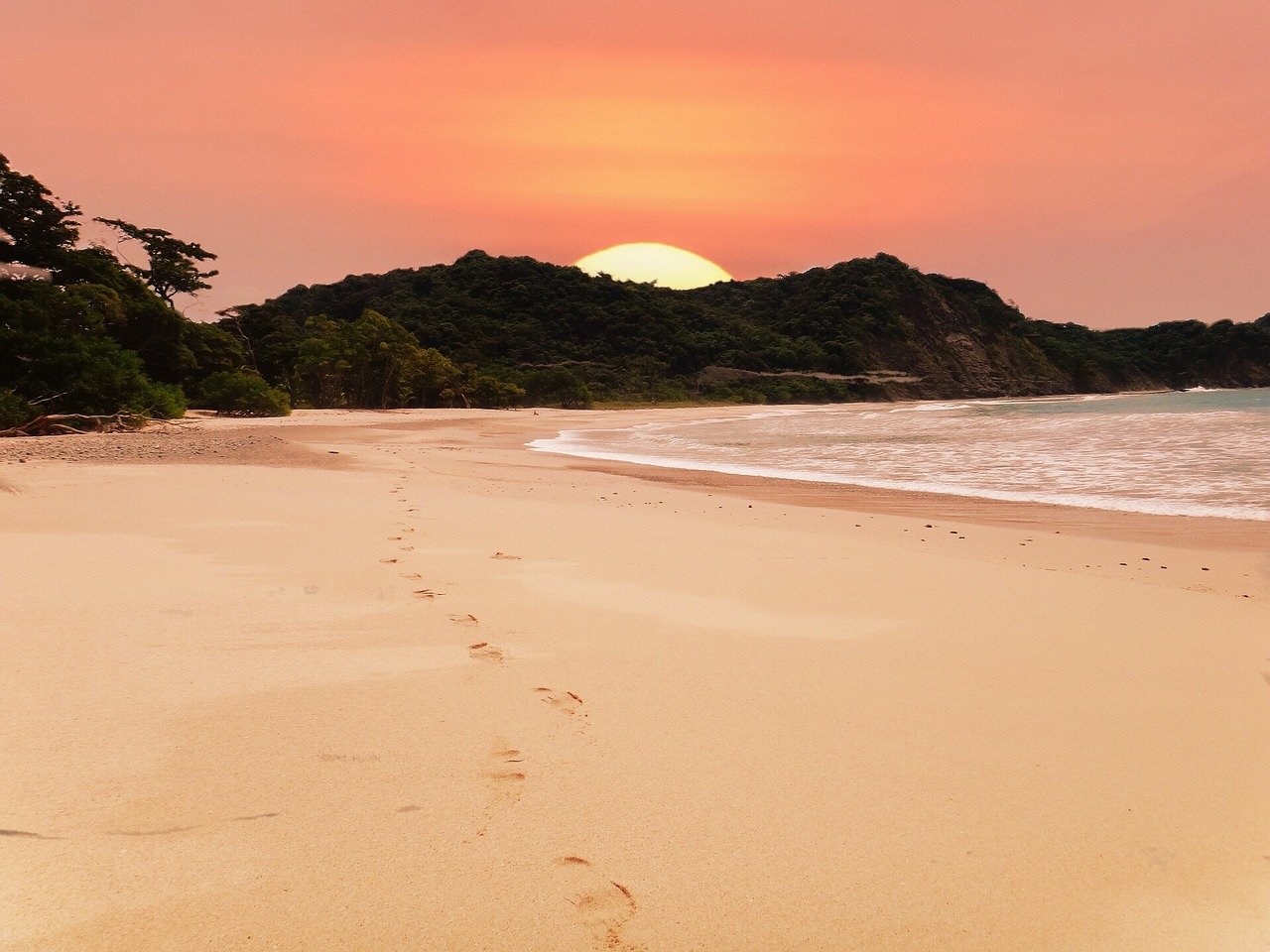As the narrow part of Central America, Costa Rica has two coasts – a Pacific and a Caribbean. Both are stunning: home to world class beaches and diverse landscape. If you’ve not time to explore both, which do you choose? Here’s our lowdown:
Caribbean Coast:
Costa Rica’s Caribbean has warm sea, sheltered reefs, whales and turtles. You’ll hear Creole spoken in some parts and there’s a noticeable Afro-Caribbean influence, especially in the food. It’s less busy and less developed than the Pacific Coast. There are no large resorts or high rise hotels, just rustic accommodation and eco hotels. This makes it cheaper, more chilled and more charming. It also makes it more difficult to get to, but the infrastructure is improving.
Wildlife:
Tortuguero National Park, with its flooded forests and canals, is a must for for turtle spotting and unspoilt jungle. Tortuguero is the western hemisphere’s most important nesting site for the endangered green turtle. The area is remote and can take a day to get to, but, if you visit between May and November, you can see turtles laying their eggs.
Snorkelling and Diving:
Cahuita is a tiny, laid back, beach town with a real Caribbean Island vibe. You’ll find a national park, snorkelling, peace and quiet.
Manzanillo and the Refugio Nacional Gandoca-Manzanillo are in a perfect, pristine, area. You can hike, kayak and snorkel. The nearby reef has some of the best diving in Costa Rica.
Weather:
The Caribbean Coast has a constant, warm, equatorial climate with high rainfall and no dry season.
The Pacific Coast has more defined seasons: dry from December to April; and rainy from May to November.
,
Pacific Coast:
The Pacific Coast also has white sand beaches, but it also has waves. This makes it a magnet for world class surfers. It’s more developed than the Caribbean Coast: closer to the 2 airports with high rise hotels and resorts aimed at the US market. The Pacific also has more national parks (11) and adventure activities.
Surfing:
Malpais, Santa Teresa and Montezuma have world’s class surf schools and a laid back beach vibe.
Wildlife:
Manuel Antonio National Park is great for rainforest hiking with capuchin and squirrel monkeys, sloths and vivid, tropical frogs. It also has white beaches, a coral reef offshore and amazing snorkelling and scuba.
The Osa Peninsula, in the south, is the best place for humpback whales. It is home to 2 national parks including Corcovado National Park – beautifully lush and home to scarlet macaws, Baird’s tapir and harpy eagles and primary rainforest.
The Nicoya Peninsula contains the 3707 acre Curu National Wildlife Refuge. It’s privately owned and managed, but the tropical rainforest and mangrove swamps are a good place to spot: ocelots, pumas, margay cats, coyote, anteaters and otters, and 323 species of birds.
Central attractions:
The Pacific Coast’s more advanced infrastructure makes it closer to the phenomenal volcanoes, cloud forests and hot springs of the centre.

Pingback: Stay in an affordable Eco-friendly lodge in Costa Rica - GirlWithTheSuitcase